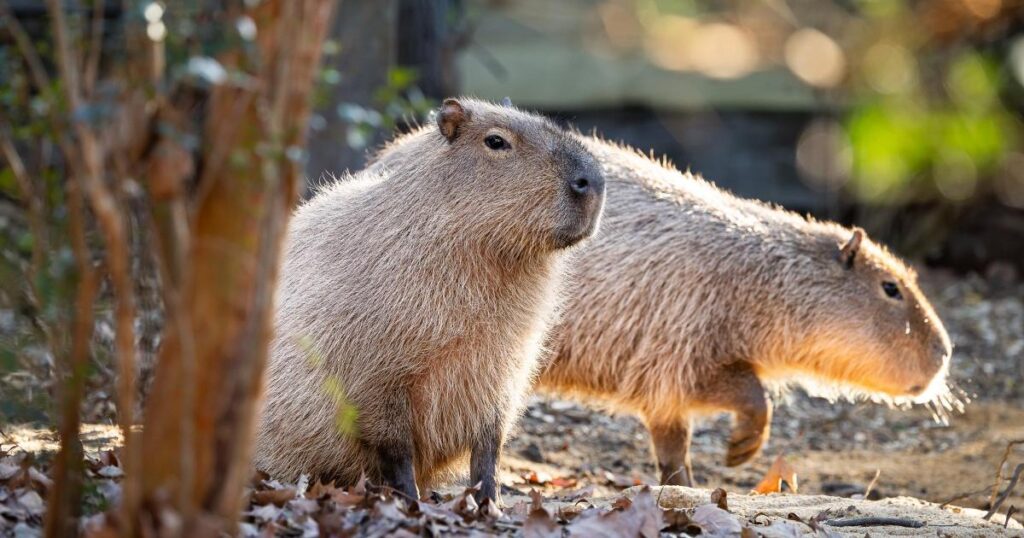This week the zoo unveiled the new spa-inspired home for siblings Gizmo and Kiwi, complete with two pools, mud-bath wallows, and climate-controlled zones.
Yesterday morning (Thursday 20 November), they ventured outdoors for the first time since moving.

Kiwi, the female sibling, was the first to brave the chilly November air, and was first to trot outside and explore their new space. Older brother Gizmo was less keen to leave their balmy indoor bathing pool, but couldn’t let his little sister have all the fun.
Together they inspected every corner of the new home, stopping only to soak in the morning sun.
The world’s largest rodents, capybaras are a semi-aquatic species who love a daily dip, and their new home features two pools for the pair.
With partially webbed feet and eyes and nostrils located on top of their head like a snorkel, capybaras—whose scientific name Hydrochoerus hydrochaeris translates to ‘water pig’—are adept swimmers.
Visitors to London Zoo will be able to see Gizmo and Kiwi showing off their capy-paddle in their outdoor pool, naturally filtered by tasty bulrushes.
Their new abode also features an indoor, heated, bathing pool to help keep their skin moisturised.
With a climate-controlled indoor zone to relax in, the capybaras can dry off after their daily swim by basking under UV lamps and enjoying the tranquil ambience of their new home.

Naturally inquisitive and friendly, London Zoo’s capybaras enjoy daily training sessions with their keepers, which help their care team to perform basic health checks.
Although London Zoo’s capybaras are being treated to a luxurious lifestyle, the same cannot be said for all capybaras.
A result of their ‘internet-fame’, a demand for capybara as pets is growing.
London Zoo’s new capybara habitat aims to ensure all visitors leave understanding why the giant rodents don’t make good pets and what they can do to discourage poor animal practices.
Visitors to the conservation zoo will be able to see the capybaras in their new home from today (November 21).




